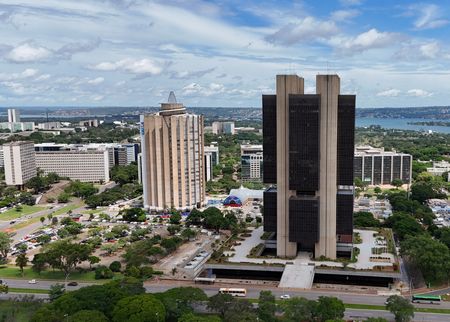By Howard Schneider and Lindsay Dunsmuir
WASHINGTON (Reuters) -Federal Reserve officials said on Monday they still had faith that U.S. inflation will ease, with housing price increases in particular expected to help pull down the headline pace of price increases, but also acknowledged an increased sense of caution around the debate.
“Although housing-services inflation remains quite high, the current low rate of increase on new rental leases suggests that it will continue to fall,” Fed Governor Lisa Cook told an event hosted by Harvard University in which she endorsed a “cautious” approach to easing monetary policy.
In an interview with Yahoo Finance, Chicago Fed President Austan Goolsbee said the persistence of housing inflation continues to surprise him, but that he also felt it would ebb.
Noting the slowed progress on inflation overall this year, after a steady decline in 2023, “the main puzzle has been about housing,” Goolsbee said, a major component in the consumer spending basket that has accounted for a large share of recent headline inflation readings.
“We’ve got to get housing inflation coming down closer to where it was before the pandemic,” he said. “I do think the market rents show that there is progress to be made, but we have yet to see that in the overall data.”
The Fed last week held its benchmark overnight interest rate steady in the 5.25%-5.50% range, and in new quarterly economic projections showed the median policymaker still expects three quarter-percentage-point rate cuts this year.
Goolsbee said he was in that median group, showing continued faith among Fed policymakers that inflation will decline enough in the coming months for the monetary policy easing to proceed.
But the rhetoric and the substance of the debate have begun to shift since the steady decline of inflation last year gave way to a slower pace of progress.
“We’re in a little bit of a murky period,” Goolsbee said, though in general he said he agreed with Fed Chair Jerome Powell’s characterization last week that the overall “story” of a continued decline in inflation had not changed.
“It doesn’t feel to me like we’ve changed fundamentally the story that we’re getting back to target,” Goolsbee said, arguing that the months of steady inflation decline last year were probably not “just random.”
Others, however, have begun to have their doubts.
In comments to reporters late Friday afternoon, Atlanta Fed President Raphael Bostic said he was “definitely less confident” than he was in December about continued progress on the inflation front, and had trimmed his policy outlook from two expected quarter-percentage-point cuts this year to just one.
“We’ve got to stay on top of this to make sure we understand what these dynamics are,” Bostic said, noting that the share of items with prices increasing by outsized rates were “reminiscent” of what was seen when inflation jumped to 40-year highs in 2021 and 2022.
TREADING CAREFULLY
Though investors still are betting the Fed will start cutting rates in June, policymaker projections issued last week showed a seeming drift towards less monetary easing this year.
Though the median stayed the same, it did so only barely, with nine of 19 policymakers seeing a higher policy rate of interest at the end of 2024 than the 10 who determined the median. In addition, policymakers’ risk assessments shifted slightly towards concern about higher inflation.
New inflation data is due to be released on Friday.
Asked whether he thought that data would confirm steady downward progress, Goolsbee said “well, it better, and let’s hope we even start speeding up the improvement. We have to,” given that current inflation is “well above our target.”
The personal consumption expenditures price index excluding food and energy, which the Fed considers a good indication of underlying inflation, rose 2.8% in January. Economists polled by Reuters expect it to have increased at the same pace in February.
While Cook did not specify her policy expectations for the year, she agreed the Fed should tread carefully as it considers easing monetary policy.
“The risks to achieving our employment and inflation goals are moving into better balance,” she said. “Nonetheless, fully restoring price stability may take a cautious approach to easing monetary policy over time.”
(Reporting by Howard Schneider; Editing by Paul Simao)










